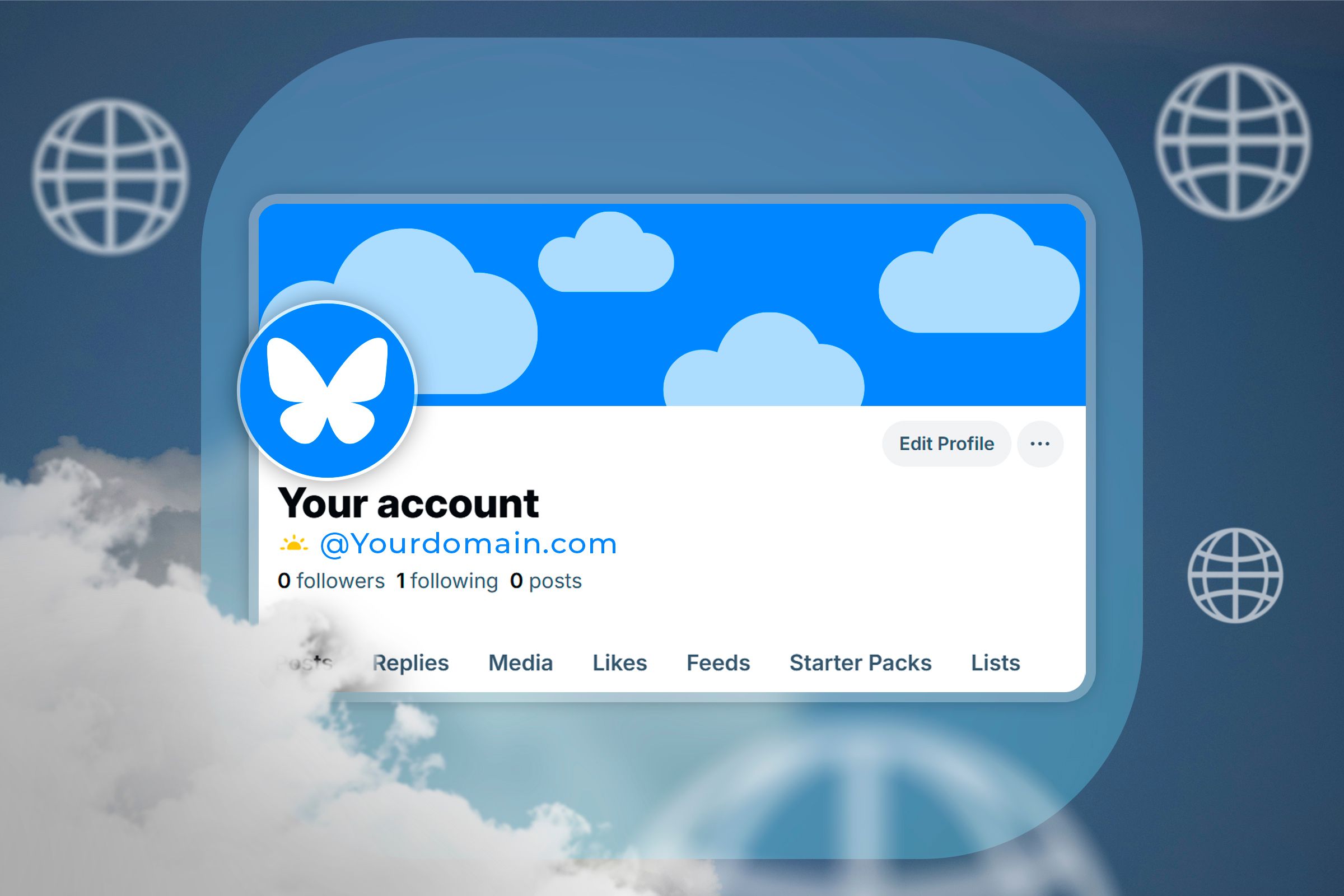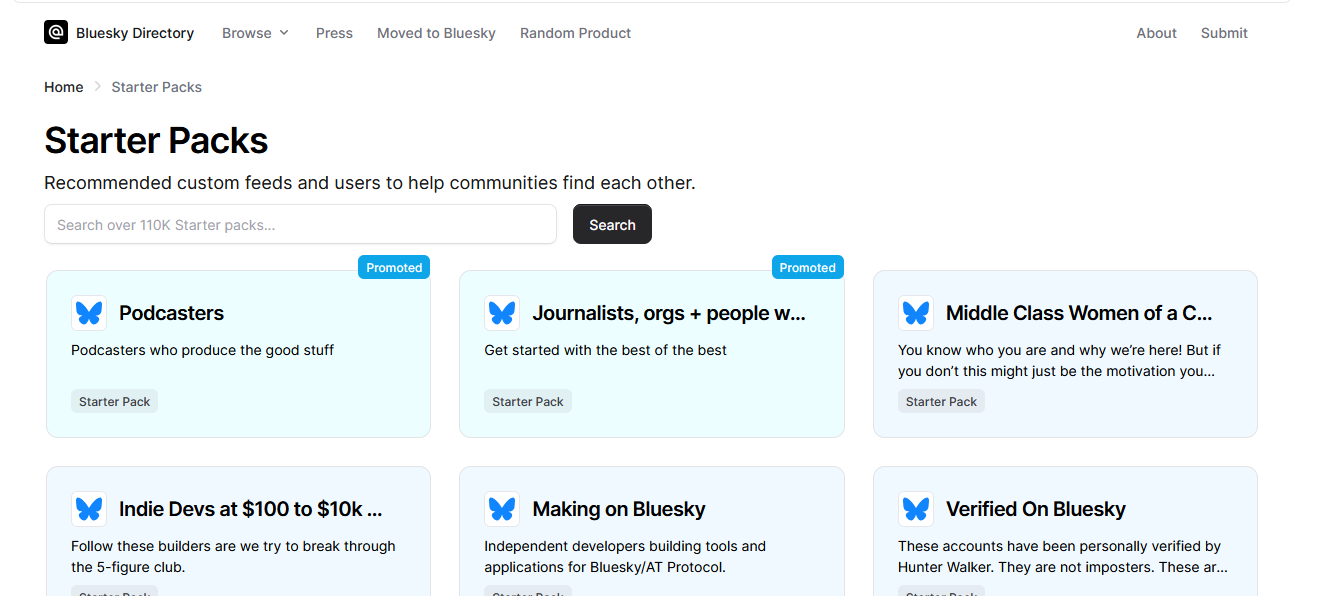Bluesky is growing as a social media platform, but it doesn’t have a typical verification system yet. It’s relatively easy for bad actors to get onto the platform and pretend to be someone they aren’t. Following these tips will help you stay safe.
There’s No Official Verification System to Trust at Bluesky
If you are familiar with other popular social media sites like X or Facebook, you may know that they’ve had different ways of providing verification or a sense of trust for some accounts. Back when X was called Twitter, they ran a verification campaign for high-profile accounts. Now, both X and Facebook have paid tiers that can make accounts seem more legitimate since most scammers aren’t spending money for their scams.
Bluesky doesn’t have anything like this right now. They do have moderation teams on the lookout for impersonation accounts, but that’s about it. For the regular user, it’ll be up to you to determine whether or not that account you are looking at is really the same person you had friended on X or Facebook or the celebrity that you followed. As for how to do that, there are a few options you can consider.
Check for Verified Domains Attached to the Account
The closest thing Bluesky has to a traditional verification system is the ability to self-verify through a publicly recognized website with its own domain name. You can make some changes with your web host or domain registrar, and you can have Bluesky convert your previous Bluesky social handle into your domain name instead. Doing this associates a Bluesky account with a pre-established web presence, which you can use as a way to judge an account’s trustworthiness.
Now, this is not to say that just because a Bluesky account has an attached website domain somewhere, it’s trustworthy. But an impersonation or scam account isn’t likely to be connected to a domain that looks reliable. If a Bluesky handle is also a domain name that leads somewhere trustworthy, that certainly lends a bit of credibility to it.
For example, there are Congress members with official accounts at house.gov or senate.gov domains. Sen. Ron Wyden (D-OR) posts on Bluesky as @wyden.senate.gov. That link takes you to a verified government website, so you can be sure that Senator Wyden’s Bluesky account is legitimate.
You might want to consider setting an established domain name as your own Bluesky handle. But for now, let’s focus on how else you can verify other peoples’ accounts.
See If Other Bluesky Profiles Have Vouched for the Account
Impersonation accounts often have telltale signs to give them away. They usually don’t have many friend accounts, or they haven’t been around for very long. You probably won’t see too many other real accounts vouching for the veracity of a fake one, either. If a scam account does have friends or other connections on Bluesky, they’ll probably be equally suspicious bots.
So, one thing you can do is check and see if other profiles support the veracity of the Bluesky account you are looking at. For example, follower lists should be filled with other real profiles. If you are looking at a profile for someone specific, such as a politician, it would make sense for other associated political profiles to follow it.
There is also Bluesky’s starter pack feature. This allows trusted individuals to put together a list of accounts you can follow. If the starter pack comes from a trusted account and the account you are curious about is on that starter pack, that could be a hint to its trustworthiness. There’s also another option on Bluesky called “labelers.”
This is a user-generated filtering option that you can add to your own account. These labels have been put together by people like reporters and mark accounts of media types, celebrities, and politicians that said reporters have verified. When you subscribe to these labeling options, accounts that have been determined legitimate by these labelers will get an extra marker for you to look at near their handle.
That said, this tactic of trusting other accounts to verify ones you aren’t sure about isn’t the only thing you can do.
The reality is that many people are flocking to Bluesky as an alternative to media platforms like X or Facebook. If they had a significant presence on those platforms, such individuals might use their old accounts to announce the fact that they are moving to Bluesky, or they might even try to use the same handle they used on X or Facebook for their Bluesky account.
If they do that, you can verify a Bluesky account by checking out such announcements on their other social media accounts, or you can try and search those accounts yourself. Suppose the person who allegedly set up the Bluesky account you are looking at has a blog, a personal website, an author or LinkedIn page, or something similar. In that case, you can check those out as well to see if the user has made any mention of setting up a Bluesky account. It’s even better if they link to that account directly.
Unfortunately, while it’s a good idea to do this, there will be plenty of people who just don’t do it. A lot of users, even those well-established on X or Facebook, won’t announce their new Bluesky account. Still, it doesn’t hurt to check and see if they were wise enough to do so.
Ultimately, there’s no surefire way to verify the legitimacy of a Bluesky account without any room for doubt. Everything we’ve discussed here today is just the little you can do to scrutinize suspicious Bluesky accounts before following them blindly or getting lured into some sort of scam. We’ll be much better off when Bluesky implements some more robust verification methods that we can all rely on.
Until then, though, there are plenty of other things to focus on if you want to get started on Bluesky.






